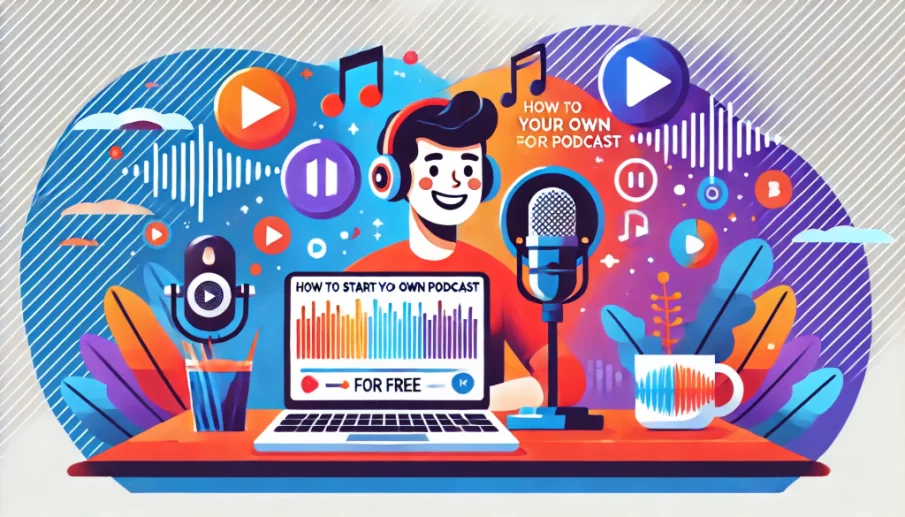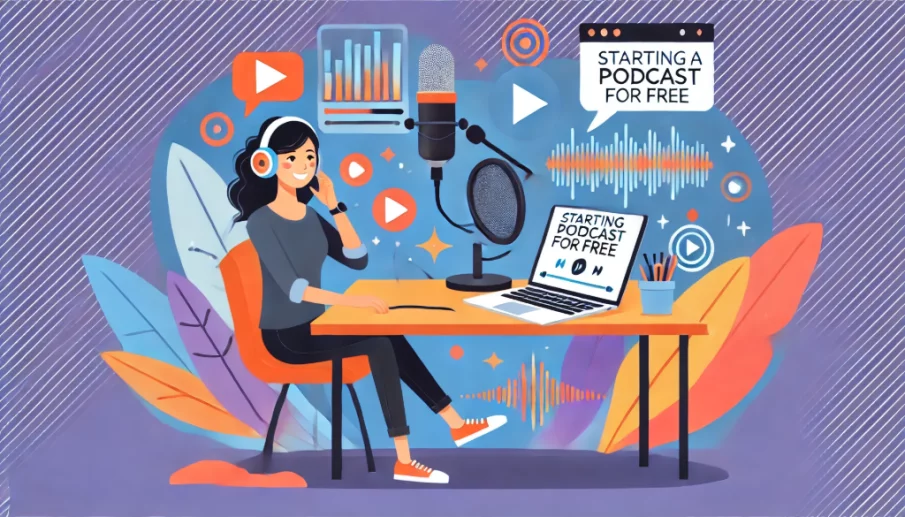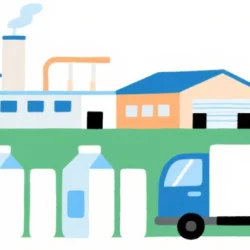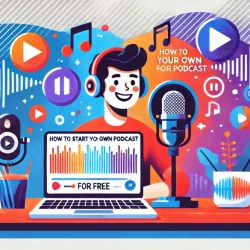How to Start Your Own Podcast for Free

Podcasting has become one of the most popular ways to share ideas, stories, and expertise with a global audience. Whether you're passionate about true crime, want to share business tips, or just love chatting about pop culture, starting a podcast is easier than ever—and you can do it without spending a dime. In this guide, we’ll walk you through the steps to launch your own podcast for free, from planning to publishing.
Why Start a Podcast?
Before diving into the technical details, let’s talk about why podcasting is worth your time. Podcasts are incredibly versatile. They allow you to connect with an audience on a personal level, build a community around your niche, and even monetize your content down the line. Plus, with the rise of platforms like Spotify and Apple Podcasts, the barrier to entry is lower than ever. But how do you get started without breaking the bank? Let’s break it down.
Planning Your Podcast
Define Your Niche and Audience
The first step to starting a podcast is figuring out what you want to talk about and who you’re talking to. Ask yourself: What am I passionate about? Who would benefit from listening to my podcast? Narrowing down your niche will help you stand out in a crowded market. For example, instead of a generic "health podcast," you could focus on "mindful eating for busy professionals."
Choose a Format and Structure
Next, decide on the format of your podcast. Will it be a solo show, an interview-based podcast, or a co-hosted conversation? Each format has its pros and cons. Solo shows are great for sharing your expertise, while interviews can bring diverse perspectives to your content. Once you’ve chosen a format, plan out the structure of each episode. Will you have segments, like Q&A or listener shoutouts? A clear structure keeps your episodes organized and engaging.
Craft a Compelling Name and Description
Your podcast name and description are the first things potential listeners will see, so make them count. Choose a name that’s catchy, easy to remember, and relevant to your niche. Your description should clearly explain what your podcast is about and why people should listen. For example, "The Mindful Bite: Helping busy professionals build healthier eating habits, one episode at a time."
Recording Your Podcast
Gather Your Equipment
The good news? You don’t need expensive gear to start a podcast. If you have a smartphone or a computer with a built-in microphone, you’re already halfway there. For better sound quality, consider using a free recording app like Audacity or Anchor. These tools allow you to record and edit your episodes without spending a penny.
Find a Quiet Space
Sound quality is crucial for a successful podcast. Find a quiet, echo-free space to record your episodes. Closets filled with clothes can work surprisingly well as makeshift recording booths! If you’re recording remotely with guests, use tools like Zencastr to ensure clear audio from both sides.
Record and Edit Your Episode
Once you’re set up, hit record and start speaking! Don’t worry about being perfect—editing can fix minor mistakes. Use free editing software like Audacity to trim awkward pauses, remove background noise, and add intro/outro music. If you’re short on time, Anchor offers built-in editing tools that make the process super simple.
Publishing Your Podcast

Choose a Hosting Platform
A podcast hosting platform is where your audio files live and get distributed to major directories like Apple Podcasts, Spotify, and Google Podcasts. While many platforms charge fees, several free options exist today—though they often come with storage limits or branding requirements.
Spotify for Podcasters (formerly Anchor) remains a top free choice, offering unlimited hosting, distribution to all major platforms, and built-in monetization tools. You can upload episodes directly, add video podcast support, and even integrate Q&A features for audience interaction. Learn more at Spotify for Podcasters.
For creators who want more flexibility, Buzzsprout offers a free plan with 2 hours of uploads per month and episodes hosted for 90 days. It’s user-friendly and provides detailed analytics to track your growth. Check out their free tier at Buzzsprout.
RedCircle is another rising platform with free hosting, cross-promotion opportunities, and dynamic ad insertion for future monetization. It’s ideal for podcasters aiming to grow through collaborations. Explore RedCircle for details.
If you’re focused on simplicity, RSS.com provides a free plan with a 30-day trial of premium features, making it a great way to test the waters. Their platform also supports podcasting 2.0 features like transcripts and bonus content. Start at RSS.com.
Podbean also offers a free tier with 5 hours of storage and basic analytics, though it includes ads for non-paying users. It’s a solid option for hobbyists. Visit Podbean to learn more.
When choosing a platform, prioritize ease of use, distribution reach, and long-term scalability. Most free plans will suffice for beginners, but as your podcast grows, consider upgrading to paid tiers for advanced features like custom domains or ad-free hosting.
Create Eye-Catching Artwork
Your podcast artwork is like the cover of a book—it needs to grab attention. Use free design tools like Canva to create professional-looking artwork. Keep it simple, bold, and reflective of your podcast’s theme. Remember, your artwork will appear small on most devices, so avoid clutter.
Write a Captivating Episode Description
Each episode should have its own description to entice listeners. Summarize the episode’s content, highlight key takeaways, and include a call-to-action, like "Subscribe for more tips on mindful eating!" This not only helps listeners understand what to expect but also improves your podcast’s discoverability.
Promoting Your Podcast
Leverage Social Media
Social media is a powerful tool for promoting your podcast. Share snippets, behind-the-scenes content, and episode announcements on platforms like Instagram, Twitter, and TikTok. Use relevant hashtags to reach a wider audience. For example, if your podcast is about entrepreneurship, use hashtags like #StartupLife or #BusinessTips.
Collaborate with Other Podcasters
Collaborating with other podcasters in your niche can help you tap into their audience. Consider guesting on other shows or inviting guests to your podcast. This cross-promotion can introduce your podcast to new listeners and build valuable connections in the podcasting community.
Encourage Reviews and Subscriptions
Reviews and subscriptions are crucial for growing your podcast. They not only boost your visibility on platforms like Apple Podcasts but also provide social proof to potential listeners. At the end of each episode, kindly ask your audience to leave a review or subscribe. You can even offer shoutouts to listeners who leave reviews!
Monetizing Your Podcast
While this guide focuses on starting a podcast for free, it’s worth mentioning that podcasting can eventually become a source of income. Once you’ve built an audience, you can explore monetization options like sponsorships, affiliate marketing, or listener donations through platforms like Patreon. However, focus on creating great content first—the money will follow.
Final Thoughts
Starting a podcast for free is entirely possible with the right tools and mindset. By planning your content, recording with free software, and leveraging free hosting platforms like Anchor, you can launch a podcast without spending a dime. Remember, consistency is key. Keep creating, keep promoting, and most importantly, have fun! Your voice deserves to be heard.
More to Read:
Previous Posts:






